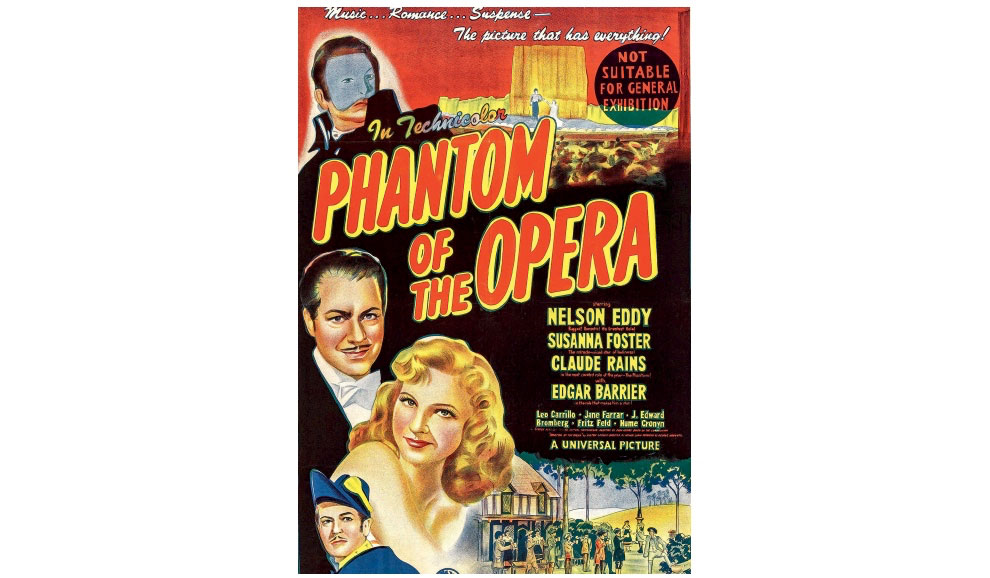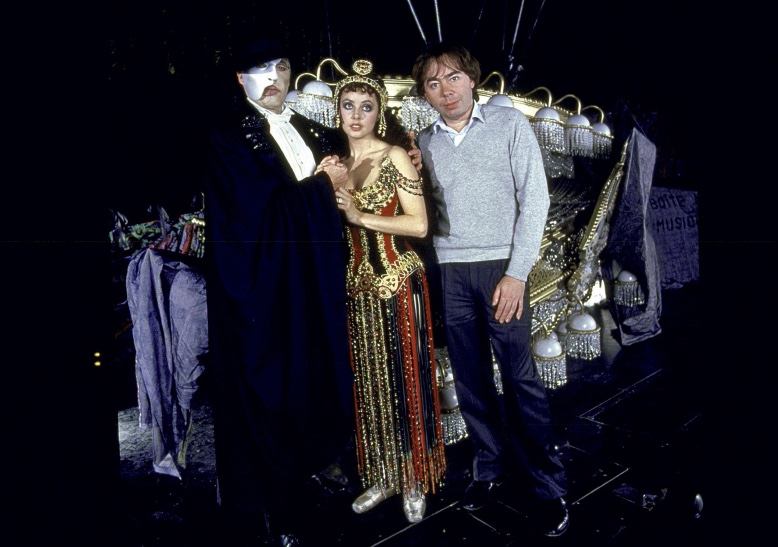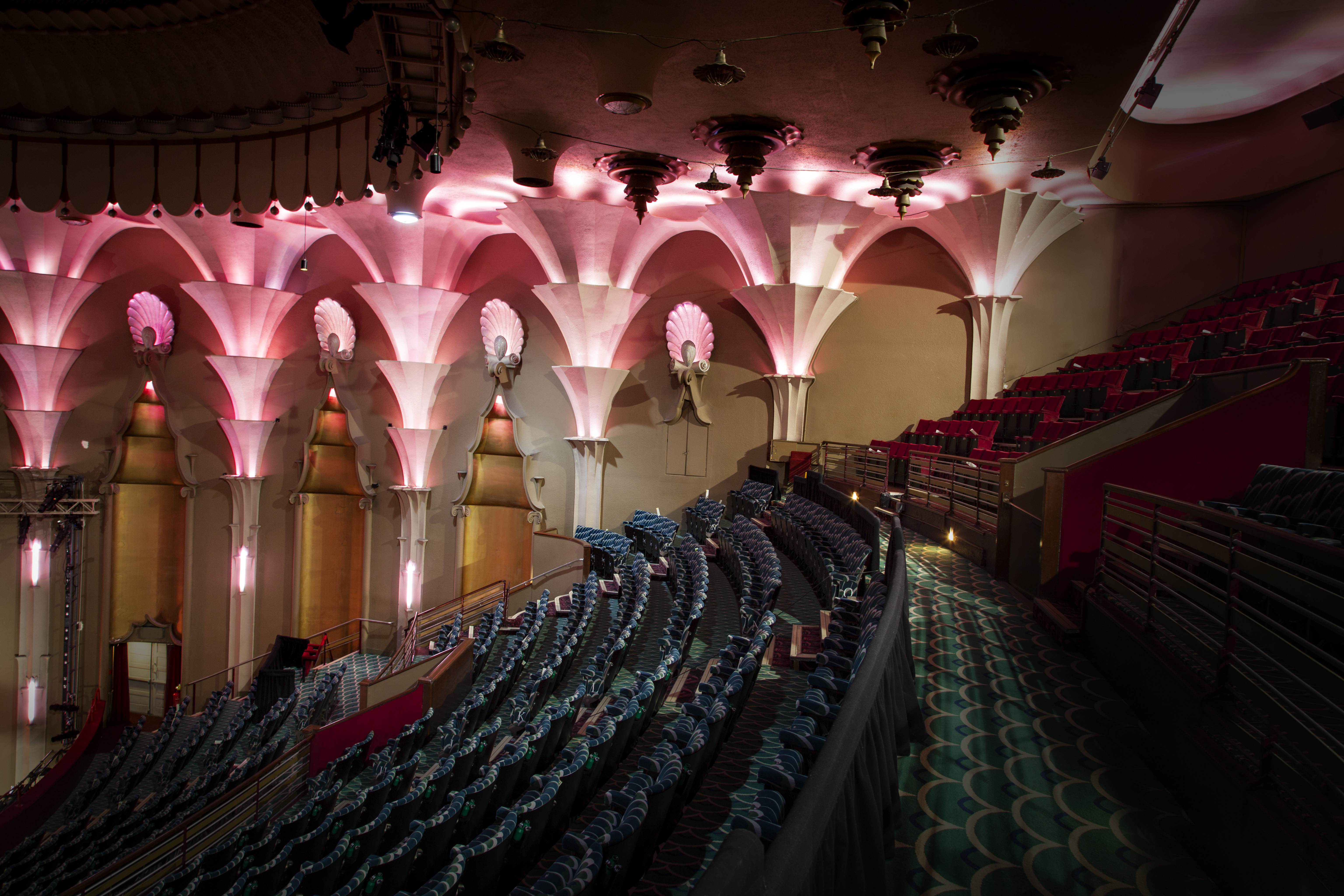In Focus: The enduring appeal of Andrew Lloyd-Webber's 'The Phantom of the Opera'
Jack Watkins tells the tale of one of the West End's most iconic musicals, and how The Phantom of the Opera evolved from an obscure novel and largely forgotten films to become a global sensation.


The Phantom of the Opera is one of a select group of stage musicals to enjoy success that has exceeded not only that of the book on which it was based, but also high-quality film adaptations. It has been a fixture of London’s West End theatreland for more than 35 years (apart from an interruption due to the Covid-19 pandemic, and theatre and set refurbishment, from March 2020–July 2021). There are, no doubt, tourists for whom a visit to the capital would not be complete without taking in a performance at Her Majesty’s Theatre, Haymarket.
Lord Lloyd-Webber had been contemplating how to bring the Phantom story to the theatre for some time before the eventual opening, following a preview in the playwright’s own home, at Her Majesty’s in 1986. There had been an earlier musical version by Ken Hill, which had run in Lancaster in the 1970s and eventually had a short spell in the West End in 1991. The composer had seen it and taken inspiration from it, but he and producer Cameron Macintosh also returned to the original novel by French writer Gaston Leroux, Le Fantôme de l’Opéra, published in book form in 1911, and studied the two Hollywood screen versions of 1925 and 1943, respectively starring Lon Chaney and Claude Rains in the title role.
The Phantom unmasked: How an obscure French novel became a global hit
When Gaston Leroux’s Le Fantôme de l’Opéra appeared in serial form in the magazine Le Gaulois from 1909–10, it garnered lukewarm reviews and sales of the subsequent book were moderate. It was the 1925 silent-film version starring Lon Chaney, ‘the man of a thousand faces’, with his horrific portrayal of the disfigured composer that truly brought it to international attention. Chaney constructed his own elaborate make-up and distorted his own features. With its dreadful unmasking scene, this version is now regarded as a classic of the early film era.
In 1943, the fascinating British character actor Claude Rains, a former tutor at the Royal Academy of Dramatic Arts and among whose pupils had been Charles Laughton and John Gielgud, starred in a technicolour version for the same studio, Universal. This adaptation placed more emphasis on the musical spectacle, with operetta star Nelson Eddy playing the Count.

Rains, brilliant in Universal’s take on H. G. Wells’s The Invisible Man a decade earlier, was immensely moving in the title role, and this expensive adaptation was nominated for four Academy Awards. For the 2004 version based on the Lloyd-Webber musical, Gerard Butler played the Phantom and Emmy Rossum was Christine.
Leroux’s story centred around a young soprano singer, Christine Daaé, of the Paris Opera House, her lover Raoul, the Vicomte de Chagny, and a disfigured man, Erik, the so-called opera ghost or Phantom, who lives in the catacombs beneath the building. Lord Lloyd-Webber drew out the romantic aspects of the tale, the isolation of Erik and the way in which Christine is mysteriously drawn to him, as well as her love for the dashing Raoul.
With the emphasis on relaying the narrative through music and song, the lyrics were written initially by Richard Stilgoe and then, with major alterations, by Charles Hart, with Lord Lloyd-Webber’s grand score featuring operatic passages. A 27-piece orchestra supported a gloriously spectacular visual production that, when the curtain finally went up, starred Michael Crawford as the Phantom, Sarah Brightman as Christine and Steve Barton as Raoul. The musical numbers The Music of the Night and All I Ask of You were so popular they were hit singles. The song The Phantom of the Opera was a top-10 smash hit months before the musical had even opened.
Exquisite houses, the beauty of Nature, and how to get the most from your life, straight to your inbox.
The Phantom of the Opera has garnered four Olivier Awards and seven Tonys. John Owen-Jones, who has also starred in another successful musical adaptation of a French classic, Victor Hugo’s Les Misérables, played the Phantom for a remarkable 1,400 consecutive performances. Michael Ball and John Barrowman are among those who have played Raoul. Miss Brightman, Lord Lloyd-Webber’s second wife, had appeared in his Cats and found fame as a singer before playing Christine.
The Lloyd-Webber musical also became a mainstay on Broadway, opening in 1988. It was already the longest-running Broadway show before the Covid-19 outbreak caused the doors to close temporarily on the production. Ticket sales subsequently failed to recover to former levels, meaning the New York production is due to close early in 2023. Nevertheless, the musical has been translated into 17 languages, and—according to the official website—has played to 145 million people in 41 countries around the world.
A film adaption of the musical, directed by Joel Schumacher, received mixed reviews upon release in 2004, as did a stage sequel Love Never Dies, after it opened at the Adelphi Theatre in London in 2010.

What the critics said about Andrew Lloyd-Webber's 'The Phantom of the Opera'
‘It is refreshing to find a musical that pins its faith in people, narrative and traditional illusion’
Michael Billington, ‘The Guardian’ opening-night review
‘It is a spectacular entertainment, visually the most impressive of the British musicals. Perhaps the most old-fashioned thing about it is that it’s a love story, something Broadway has not seen for quite a while’
Howard Kissel, ‘New York Daily News’ Broadway opening-night review
‘A beguiling blend of deft pastiche and full-blown romanticism, with some iffy lyrics by Charles Hart and Richard Stilgoe, Lloyd Webber’s musical is still glorious and, mainly, timeless’
Review in ‘WhatsOnStage’ after the musical’s post-pandemic return in 2021

My Favourite Painting: Andrew Lloyd Webber
Andrew Lloyd Webber chooses his favourite painting for Country Life.

The vast and audacious architecture of London's greatest theatres
Roger Bowdler takes a look at 'London’s Great Theatres', a new book by Simon Callow with photography from Derry Moore.
Jack Watkins has written on conservation and Nature for The Independent, The Guardian and The Daily Telegraph. He also writes about lost London, history, ghosts — and on early rock 'n' roll, soul and the neglected art of crooning for various music magazines
